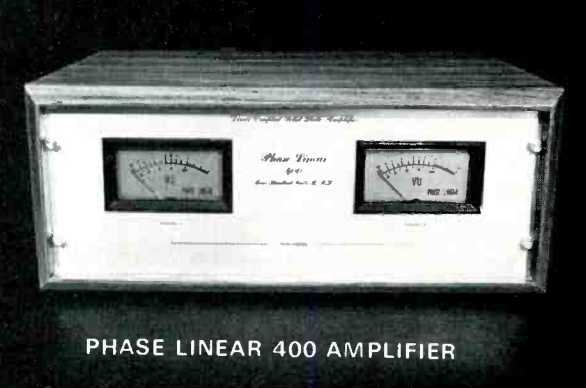
MANUFACTURER'S SPECIFICATIONS
Power: Greater than 200 watts/channel rms, both channels driven. Power at clipping: Typically 250 watts/channel rms into 8 ohms, 400 watts/channel rms into 4 ohms, 125 watts/channel into 16 ohms. Frequency response: 0 to 0.25 mHz at 1 volt, Harmonic or IM distortion: Less than .25%. Typically less than .05%. Damping ratio: Greater than 1000:1 at 20 Hz. Rise time: Less than 1.7 microseconds. Phase Shift: Leading 0 degrees, lagging 12 degrees at 20 kHz. Sensitivity: 1.4 volts for 200 watts into 8 ohms. Input impedance: 39k ohms.
Dimensions: 19 inches wide, 7 inches high by 10 inches deep. Will accommodate a standard rack mount.
Finish: Light brush gold, baked enamel and black anodize.
Price: $499.00.
During the past year or so there has been a definite trend towards high power--or rather Super High Power amplifiers. There are several explanations for this: the popularity of rock music, the appearance of several high quality, low sensitivity loudspeakers like the B & W 70 and AR LST, and the recent availability of suitable high voltage transistors at a reasonable price. In June, 1971, we reviewed the Phase Linear 700 and the reviewer, C.G. McProud said, "The hum and noise figures were well below anything we have encountered before, better than 100 dB below the 350 watt/ channel output ... we wouldn't hesitate to recommend the Phase Linear amplifier to anyone who wants and can accommodate its enormous power capacity." A few months later, Bob Carver of Phase Linear explained the thinking behind the 700 (February, 1972). In brief, the concept is to design for high power and then let the dc power supply operate on a music power basis above that point. In other words, the dc voltage is constant for short duration peaks but would fall with pulses of long duration or continuous power. This technique is open to objection for ordinary amplifiers but defensible with very high power amplifiers having a large overload margin. If the voltage was stabilized within 2% on the 700 the cost would probably be more than double-not to mention cooling problems and the increased weight! Bob Carver points out that all power supplies work by storing energy in the filter capacitors which in turn deliver that energy in the form of power to the load. As energy storage ability is proportional to the square of the voltage but only directly proportional to the capacity, a small increase in voltage results in a much higher energy storage than a similar increase in capacity. So the use of a high voltage supply not only gives a greater voltage output swing but it also gives a margin for overload peaks.
So now we come to the "Son of 700"--the 400 which is rated at 200 watts per channel and costs only $499. The power transformer is somewhat smaller than the one in the 700 and the total weight is only 35 lbs. instead of 45. The appearance is very similar, same kind of meters, same light brush gold finished panel. Unlike the 700, there are no input level controls or indicating lights-other than those illuminating the meters. There is no power on/off switch as this function will be performed by the preamp.
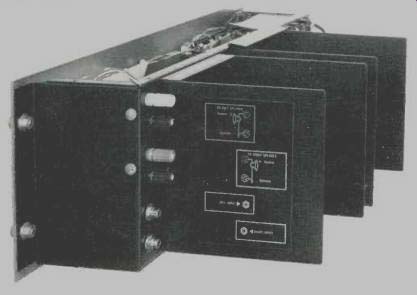
Fig. 1--Showing input and output connections.
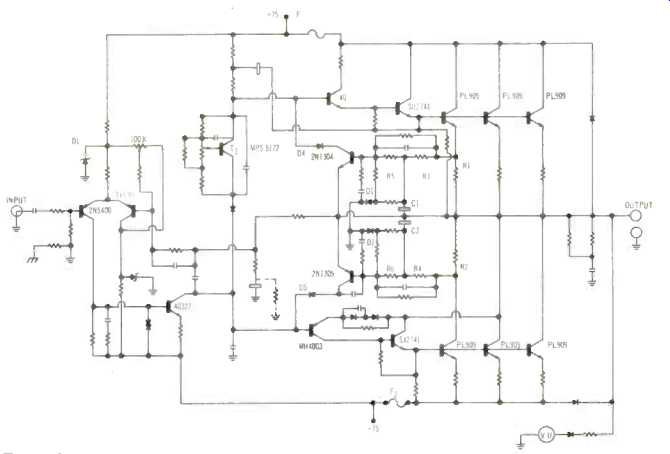
Fig 2--Basic circuit arrangement.
Circuit Details
The basic circuit is shown in Figure 3. R1 and R2 act as sensing resistors and the voltage developed is applied to the bases of the 2N1304 and 2N1305. R3, R4, C1 and C2 form part of a timing circuit which generates a voltage proportional to the current taken by the output transistors. Excessive current generates a voltage which turns on the 2N1304 or 2N1305 which in turn cause the diodes D4 and D5 to conduct and switch off the input signal. A bi-directional silicon controlled rectifier (not shown) is connected across the speaker terminals to act as a "speaker saver" (Just imagine what kind of pulses might be applied to your loudspeaker if you dropped the phono cartridge on a record with the volume control turned up!). The SCR acts as a clamp, operating in 75 milliseconds--faster than any fuse.
Measurements
Figure 3 shows the power output measured with both channels driven into 4 ohm loads. It will be seen that each channel develops more than 380 watts under these conditions. At full continuous power, the dc supply fell from 150 (75 plus 75) to 126 so the music power figures will be well over 500 watts per channel! Power bandwidth curves are not shown as the amplifier delivered full power from below 10 Hz to at least 40 kHz. In spite of the elaborate protection circuits I did not have the courage to go higher! Frequency response was 2 dB down at 4 Hz (dc coupling is used, but there is one capacitor at the input) and 2 dB down at 110 kHz. Figure 4 shows the square wave performance at 50 Hz and 15 kHz.
Stability was checked with simulated electrostatic speaker loads etc. and the 400 would seem to be unconditionally stabile. Hum and noise was difficult to measure with any degree of accuracy but it was certainly better than 100 dB as claimed. Sensitivity came out at 1.8 volts for full output. It was noted that there was a small "thump" two or three seconds after switching off. This was not considered serious--just a little disconcerting at first!
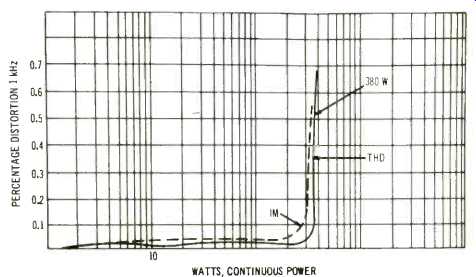
Fig 3--Power output, IM and THD.
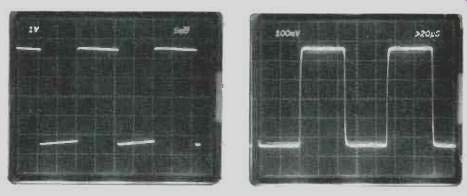
Fig. 4--Square wave response at 50 and 1 5 kHz.
Phase Linear make a lot of claims for the protection circuits so, after all the tests had been completed the amplifier was subjected to all kinds of ill-treatment in culminating with a 400 watt square wave at the speaker terminals which was then shorted with two screwdrivers. This drastic test only succeeded in welding the screwdrivers together-the amplifier was unharmed. Full marks to Phase Linear....
Listening Tests
For test purposes, the 400 was used with a Sony 2000F preamp and a pair of EPI 400's or AR LST's. Under domestic conditions, the VU meters did not peak much over the halfway mark. However, some rock afficiados did manage to get the pointers swinging into the red but the sound was clean with no sign of overloading--although it was uncomfortably loud. For me, anyway! But many people do not realize just how much power is necessary to handle peaks without clipping and they would be surprised to see how high those VU meters would read occasionally--even when listening at a relatively low power level.
How does the 400 compare with the 700? Well, in theory the 400 has lower distortion below 10 watts or so as a secondary bias loop is used to control crossover parameters. However, the matter is really academic as we are comparing magnitudes of the order of 0.005%! As to power output, the 700 gives you nearly 3 dB more power at a cost of $100 a dB; if you really need the extra power. it's worth it. If not, buy the 400.
--TA., G.W.T.
(Audio magazine, Feb. 1973)
Also see:
Phase Linear Model 2000 Preamplifier (Equip. Profile, Sept. 1976)
= = = =